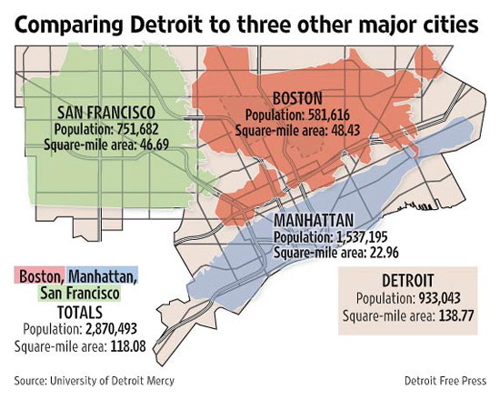
Connect










I was recently contacted by Peri Stone-Palmquist, the coordinator of the Education Project for Homeless Youth in Washtenaw County, and asked if I would mention a February sock and underwear drive being held on behalf of the young people they work with. I agreed, and took the opportunity to ask her a few quick questions about what she’s doing, the kids she’s working with and what other ways we might be able to help:
Mark: How many homeless kids do you think that we have in Ypsilanti?
Peri: Last school year, we served more than 150 in Willow Run and Ypsi Schools (412 for the whole county). As of Jan. 5, we had 78 in those 2 districts.
These numbers don’t really capture the whole picture, of course, because we have a number of students who start the school year in Ann Arbor and living in Ann Arbor, but then end up in Ypsilanti. Because of federal law, we are able to keep them in Ann Arbor schools for the rest of the school year in most cases.
Mark: So, if I’m understanding this correctly, you’re working exclusively with homeless kids currently enrolled in the public school system, and, last year, you were working with 412 students in Washtenaw Country. And, in the first week of ’09, you had already worked with 78 kids in the Willow Run and Ypsi school school districts. Would I be wrong to assume that 78 is an increase from last year at this time?
Peri: 412 either going to school or living in Washtenaw County last year, yes.
I don’t have a good apples-to-apples comparison for you (I can’t find my count from last December or January), but when I checked earlier in the year, we were up more than 30 percent over last year countywide and it seems to be getting worse.
Last year at the end of February, we had 96 kids in Willow Run and Ypsi schools, and we already had 78 as break was finishing up. I know we’re up over 80 now and I am waiting on several referrals this week from those districts.
Homeless service providers (myself included) are generally seeing tougher cases this year as well. It’s so much harder for families to find jobs, so they’re languishing in homeless situations for longer.
And I don’t necessarily see more of this than last year, but I’m always profoundly struck by the number of teens who have been kicked out of their parent’s homes at age 16, 17, 18, 19. Jobs are REALLY hard for them to come by and with no support, they are really scraping by. A friend or relative may be generous enough to let them sleep on a couch but forget about providing clothing. There are a lot of heartbreaking situations.
Mark: What services are available to homeless youth in the area, through your organization and others? Is there a comprehensive list somewhere?
Peri: Are you familiar with 211? That’s the comprehensive list of all social services.
In a nutshell, the Education Project provides referrals, school supplies, advocacy, school transportation coordination, educational supervision and support, dropout prevention outreach and pay for education-related expenses and credit recovery classes. We’re trying to keep kids in 1 school for the school year despite moving around a lot and trying to remove any barriers to a successful and normal education experience. This can take many forms. We’ve had kids miss school because they had no shoes to wear. We’ve had parents call us desperate because they had no money for gas to drive their children to school. We’ve had teens living on their own and no school would admit them — they just keep getting turned away and they’re about ready to give up. We’ve set up job shadowing opportunities that have boosted school attendance and connection. We’ve paid for (and supported) credit recovery classes that have allowed homeless teens to graduate on time, even amidst lots of chaos in their life. I could go on but hopefully that helps paint the picture.
Other providers for homeless children…
Ozone House, one of our partners, provides emergency shelter, transitional living, drop-in center, counseling, emergency food. SOS Community Services has a therapeutic daycare (free), tutoring, Girl’s Scouts, summer program and other programming.And then there all the other great youth-serving agencies our kids can tap into, including Corner Health Clinic, Neutral Zone, Peace Neighborhood Center, etc. The school districts do a lot, too. Ypsi Schools has their own clothes closet, for instance. We know many schools in Ann Arbor have helped our families get clothes, food and when they do get permanently housed, household items. We work with all these partners for our families and kids — trying to make sure their needs are met.
Mark: And I hear that you’re accepting donations at Beezy’s here in Ypsi – is there anywhere else? And, what would you recommend to folks here in the community who wanted to get more involved relative to this issue?
Peri: To get more involved, people can contact me (pstone@wash.k12.mi.us). I have a list of people I can call on in emergencies when a specific needs pop up that we can’t meet in the community. We also have a school supply drive every fall and a holiday gift drive in Nov/Dec.
If people want to work directly with these kids, I would recommend volunteering through SOS, which has a tutoring program for students who are homeless, or Ozone House.
Donations of new, unopened packages of underwear and socks in all sizes are being accepted at the front desk of the Teaching and Learning Center at the Washtenaw Intermediate School District, 1819 S. Wagner in Ann Arbor, between Liberty and Scio Church, from 8 a.m.- 4:30 p.m. Monday-Friday. In addition, the following local businesses have agreed to partner with The Education Project on this clothing drive and will serve as collection points. They are:
• Morgan and York, 1928 Packard in Ann Arbor, 9 a.m.-9 p.m. Monday-Saturday or 12-6 p.m. Sundays.
• Mast Shoes, 2517 Jackson Road in Ann Arbor, 10 a.m.-6 p.m. Monday-Wednesday or Saturday, and 10 a.m.-7 p.m. Thursday and Friday.
• Beezy’s Café, 20 N. Washington in downtown Ypsilanti, 7 a.m.-6 p.m. Monday-Saturday.
As we discussed here earlier in the month, a study was recently released that showed so-called “purity pledges” made by young women often had the unintended consequence of leading to unprotected anal sex. Well, sex columnist Dan Savage, perhaps best known for taking a former Senator’s name – Santorum – and using it as a noun to denote the “frothy mixture of lube and fecal matter that is sometimes the byproduct of anal sex,” has taken an interest in this new phenomenon. In fact, he’s coined a new term to denote the practice. The word, chosen in honor of Pastor Rick Warren’s Saddleback Church, is “saddlebacking,” and here’s the official definition:
saddlebacking: the phenomenon of Christian teens engaging in unprotected anal sex in order to preserve their virginities
Surely, I think, this will change Warren’s mind about gay people being “immature.”

A few days ago, I posted something here on the site about how there were more people standing on the Mall in DC for Obama’s inauguration than there are living in the entire, sprawling city of Detroit. The post itself wasn’t particularly insightful, but it led to an interesting conversation about Detroit, its declining population, and why it developed in the way that it did over the past century.
The first comment, left by our friend Ol’ E Cross, referenced an image from the Detroit Free Press (pictured above) that, as he pointed out, illustrated nicely the fact that Boston, Manhattan and San Francisco could fit neatly into the footprint of Motor City, with room to spare. He then made the case that this reflected, “the results of our region’s land use and infrastructure policies.”
But, as Robert was quick to point out, the comparison might not be fair, as these other cities had natural barriers to constrain their growth. Here’s a clip from his comment:
Cool map find, Ol’ E Cross. It should be noted that Manhattan is an island and that San Francisco is located at the tip of a fairly narrow peninsula. If Detroit sprawl had run up against similar natural barriers on all or most sides within a few miles, it’s likely the city limits would have ended there too, and Detroit’s population density would resemble more those of the old coastal cities. Actually, more likely in that case, Toledo would have attracted the shipping and transportation, and we’d all be driving down there to watch the Toledo Tigers, Toledo Red Wings, and Toledo Pistons. The good news would be that we’d have the Detroit Mud Hens, and those Lions would be Toledo’s problem right now. I could live with that…
But, the final comment belonged to city planner Richard “Murph” Murphy, who offered the following:
Not all of that is current land use and transportation policy – a lot of it is a result of the age of the cities, and the eras in which each of them had their growth spurts.
Look to 1900 as a convenient “dawn of the automotive age”.
1. NYC – 3.4m
5. Boston – 560k
9. SF – 343k13. Detroit – 286k
36. LA – 106k.Detroit grew in population 10-fold between 1900 and 1950 – the time when it was growing because of cars. Calling the socioeconomic structure of 1900-1970 “Fordism” is no coincidence; Henry Ford’s theory of “pay them enough that they can afford the product” built Michigan’s middle class by building MIchigan’s market for automobiles.
A city that has its population spike because those people are building and buying cars is a city that will be designed from the ground up around automobiles. LA similarly exploded during and after WWII, when good access to cars was joined by Levittown-style manufacturing of subdivisions, so it too is a city built around detached single-family homes and automobiles.
By comparison, NYC and Boston (and Chicago and Philly) are cities that grew to metropolitan critical mass before ready access to cars or even to single-family homes for the working class. Therefore, they’re cities that are built around proximity – put things close together, and you get density – and the mass transit systems that have to be created in order to keep that proximity from choking up the streets with cars. (I mean, more than they are.)
So, yes, some of it is a result of regional fragmentation pulling people and industry out of the core cities over the last half century. But as Robert notes, there’s also a fair bit of “how far could they expand before hitting boundaries,” whether those boundaries were the Hudson River, the San Francisco Bay, or the Dearborn City Limits.
But a lot of it too just has to do with the state of transportation technology and the housing finance markets at the time that the cities were growing. In no small part, NYC has density because it had density.
I just found this fascinating.
For those of you who don’t care in the least, here’s a link to footage of Arnold Schwarzenegger lifting weights.
Now that Obama has proposed an economic recovery plan, and set the wheels in motion to close our secret prisons around the world, deal with the individuals being held without charges at Guantanamo and stop the use of torture, he’s moving on to the environment. Today he signed two executive orders on environmental policy, and directed federal regulators to – according to the New York Times – “move swiftly on an application by California and 13 other states to set strict automobile emission and fuel efficiency standards,” something which the Bush administration had vehemently opposed.
The automotive industry, as you might expect, has gone apoplectic. Here’s a clip from yet another article in the New York Times:
… The California regulations, if enacted today, “would basically kill the industry,” said David E. Cole, chairman of the Center for Automotive Research, an independent research organization in Ann Arbor, Mich. “It would have a devastating effect on everybody, and not just the domestics.”
I wish I could go on an on about this, but I’ve got other work I need to attend to tonight. If want to lend a hand and help fill in some of the blanks, it would be appreciated. Just leave a comment.